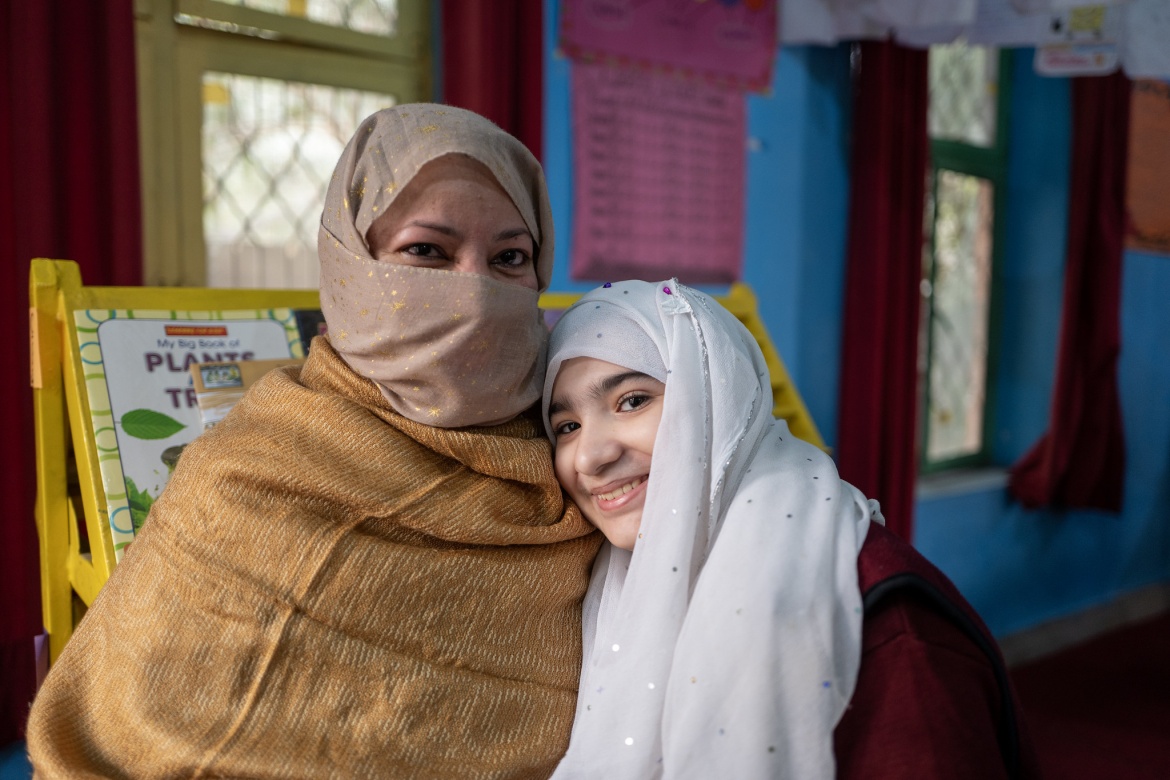Punjab, Pakistan: Afternoon programs bring thousands of children to school

Story highlights
- With close to 12 million children out of school in Punjab, the government faces a huge challenge in giving all children an education, especially beyond primary school.
- Afternoon school programs, part of TALEEM, are one way of bringing children to school.
- TALEEM is funded by a $50.6 million GPE grant. To date, 1,500 afternoon schools have been set up, allowing more than 92,000 students to learn.

At age 10, Dania Nisar’s prospects for continuing her education were grim: she had finished grade 5 but her school, the Government Girls Primary School (GGPS) Nishtar Colony in Lahore, didn’t offer middle grades.
Since there was no public middle school near her home and her parents couldn’t afford the fees for a private school, Dania had to resign herself to staying home. She helped her dad with his catering business, cooking and baking, and her mom with her activities. But she still hoped to be able to realize her dream of becoming an army doctor.
“I watched a drama serial on TV and some of the women in the drama became army doctors. That’s what I want to do too,” says Dania.
Fast forward one year: Zara Batool, headteacher at Dania's primary school, paid a visit to Dania’s family and informed them that a new afternoon program was starting at the school and that they should enroll Dania.
The program is meant specifically for girls, which is important as many families in Pakistan prefer boys and girls to be educated separately starting in middle school.

Dania was enrolled and very happy to resume her studies in grade 6.
A typical day for her goes like this: in the morning she gets up and helps her family at home, preparing food. She also does her homework. In the afternoon, she’s in school from 1:45 p.m. to 5 p.m. In grade 6, she really enjoyed learning about computers; now in grade 8, her favorite subject is science.
A massive challenge: out-of-school children
Dania is one example among many children in Punjab who either don’t have access to education beyond primary or simply don’t have access to school at all: close to 12 million children are out of school in Punjab, out of an estimated 26 million out-of-school children overall in the country.
The challenge is immense, but the government is determined to gradually include all these children in the education system, in formal or non-formal settings, and give them the skills they need to build a better future for themselves and their families.

TALEEM stands for “Transformation in Access, Learning, Equity and Education Management” and means “education” in Urdu.
Community mobilization to bring children to school
One of the first challenges is identifying the children who are not attending school and, in many cases, persuading parents to let girls continue their education.
TALEEM funded awareness campaigns and hired local mobilizers who walk around neighborhoods, call parents and inform families about available education options, including afternoon school programs like the one Dania attends, and non-formal centers.
The campaigns started in March 2023 with a special enrollment effort in August, before the start of the regular school year 2023–2024.

The campaigns include community events with art competitions and cultural gatherings, messages on social media and ads in newspapers, and enlist the help of school councils.
The councils, composed of prominent community members, teachers and parents, support school management, including budget decisions, hiring of teachers and mobilizing enrollment.

to learn.
The afternoon school program is conducted on the premises of primary schools where grades 1 to 5 are held in the mornings. Hence, it not only enables many children to continue education at the middle level, but also makes the best use of existing facilities.
According to estimates, it would take the government decades and a colossal amount of resources to build enough schools to cater to all out-of-school children.
As of January 2024, the afternoon school program has contributed to a 9.8% reduction in children identified as being out-of-school due to non-availability of middle schools.






